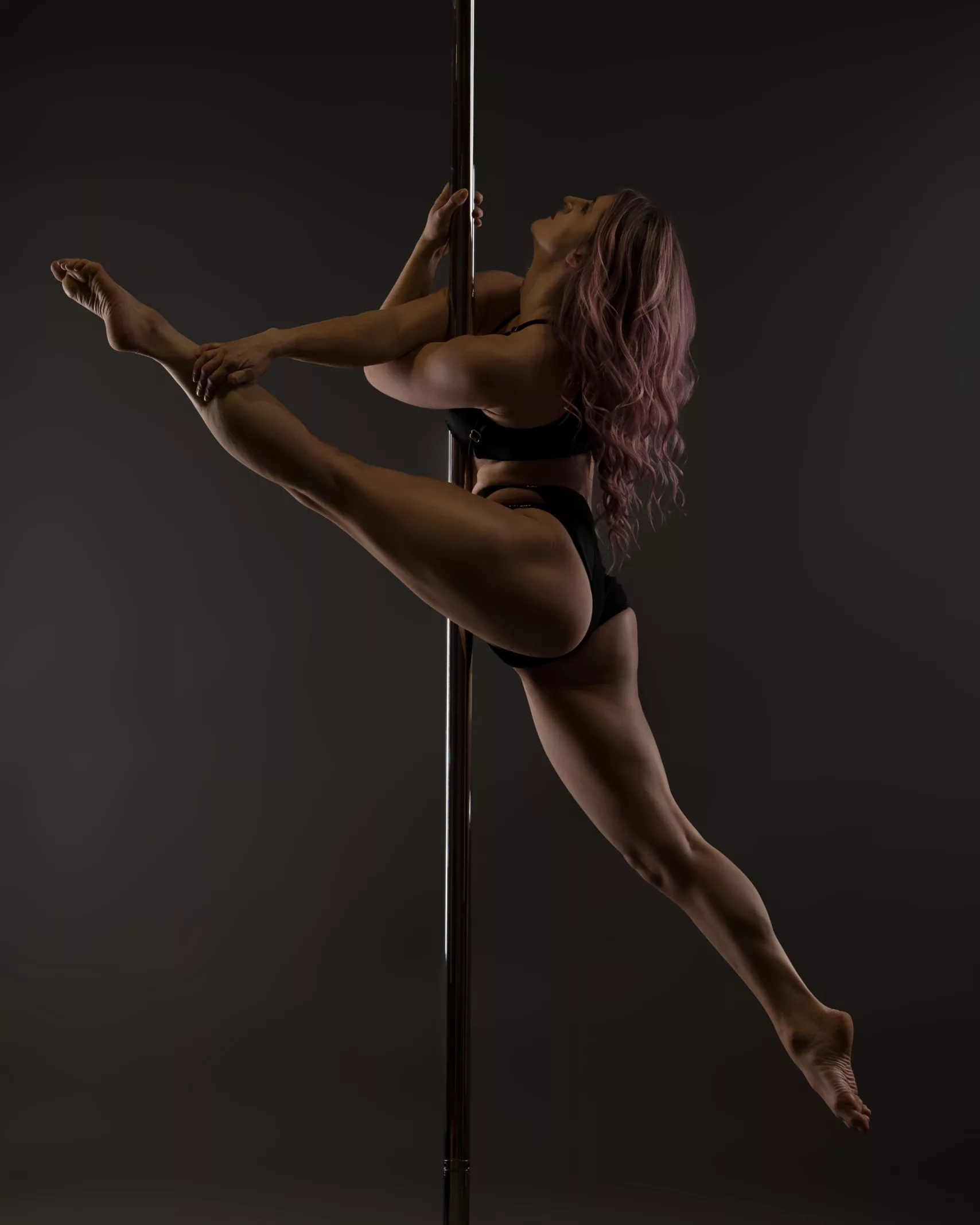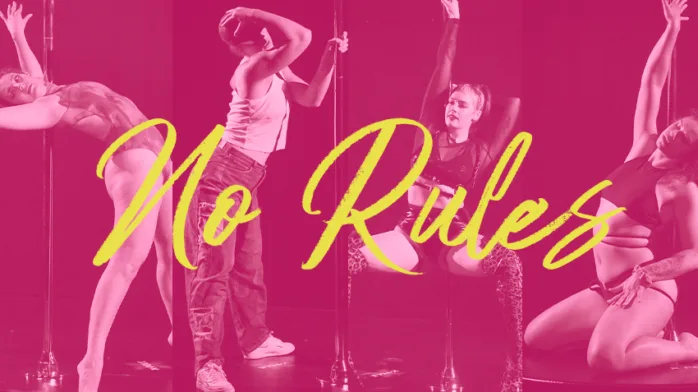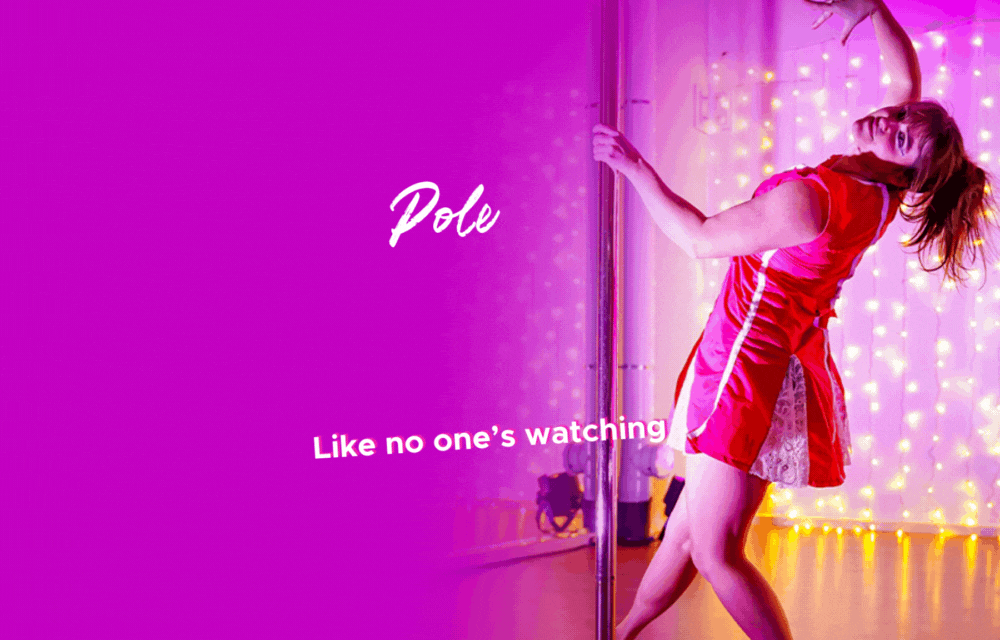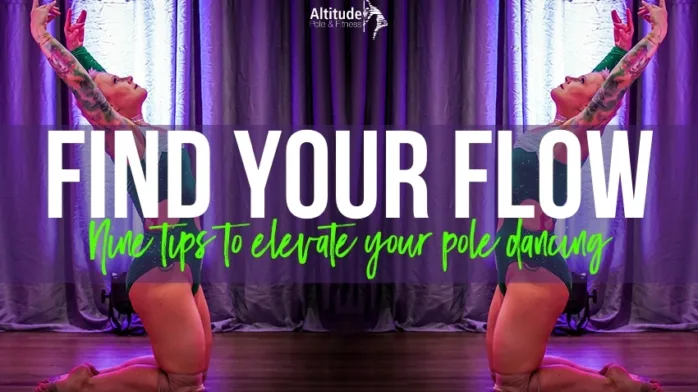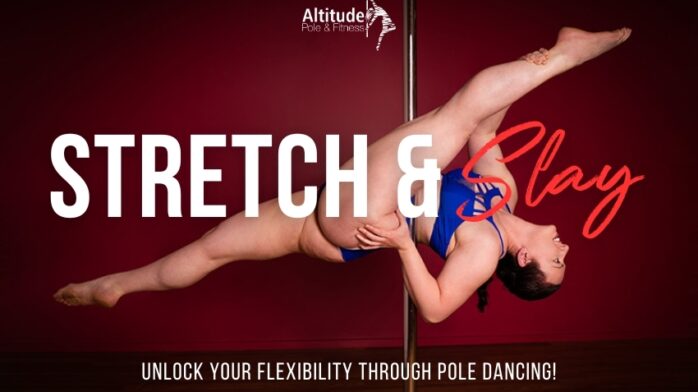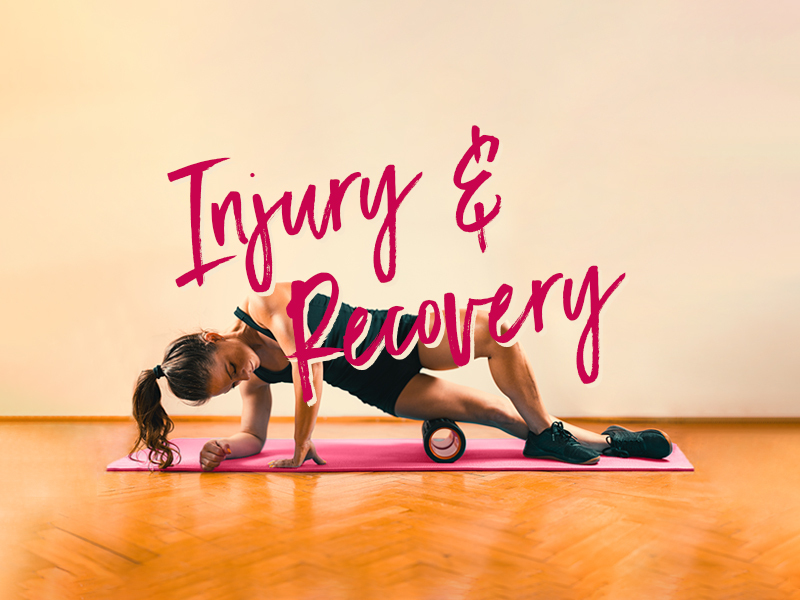
Pole Frustrations - Injuries and Recovery
Injuries are one of our worst fears, and, unfortunately, a very real part of having an athletic hobby. Our lives are full of activity and sometimes accidents happen - whether it’s at home, at work, in the studio, or on a drunken night out when you maybe shouldn’t have tried showing off your splits without warming up first #oops
We’ve sat down with our very own recovery queen, Emma (boss-babe of Altitude Pole Whanganui and Palmerston North) to talk about her injury journey to pick her brain about how she managed it.
So Emma, tell us a little about your own injury and recovery journey
Everyone always thinks that injuries are something that happens to other people, you’ll be totally fine doing this potentially silly thing 'cause you’re not trying to get hurt… and then it happens to you.
I’ve been pole dancing for over 9 years now, and I’ve done some of the “classic” injuries (rotator cuff, both hamstrings), and some weird ones (arch of my foot, and one time I punched a pole).
But my worst injury was an error in judgment and not even pole dancing! I lifted my husband into my arms for a photo wearing 7-inch Pleasers. It ended in my ankle dislocating AND three breaks, two in my ankle and a snapped fibula. So stupid!
The first thing asked in A&E was "will she be able to point her toes again?" and the doctors actually said it was super unlikely. I wasn’t sure what that meant for my future in pole! A pole dancer who can’t point their toes?!
Some ankle breaks are way more chill, but I'd managed to do as good of a job as possible. My break required emergency surgery, and a couple of days in the hospital, before returning home to sleep for almost a week. The entire time my ankle was in a cast, any exercise that pumped my blood was so painful as the bone was still healing. Once I was downgraded to the Moonboot, I was able to start very gradually rebuilding my strength, starting with re-learning how to walk!
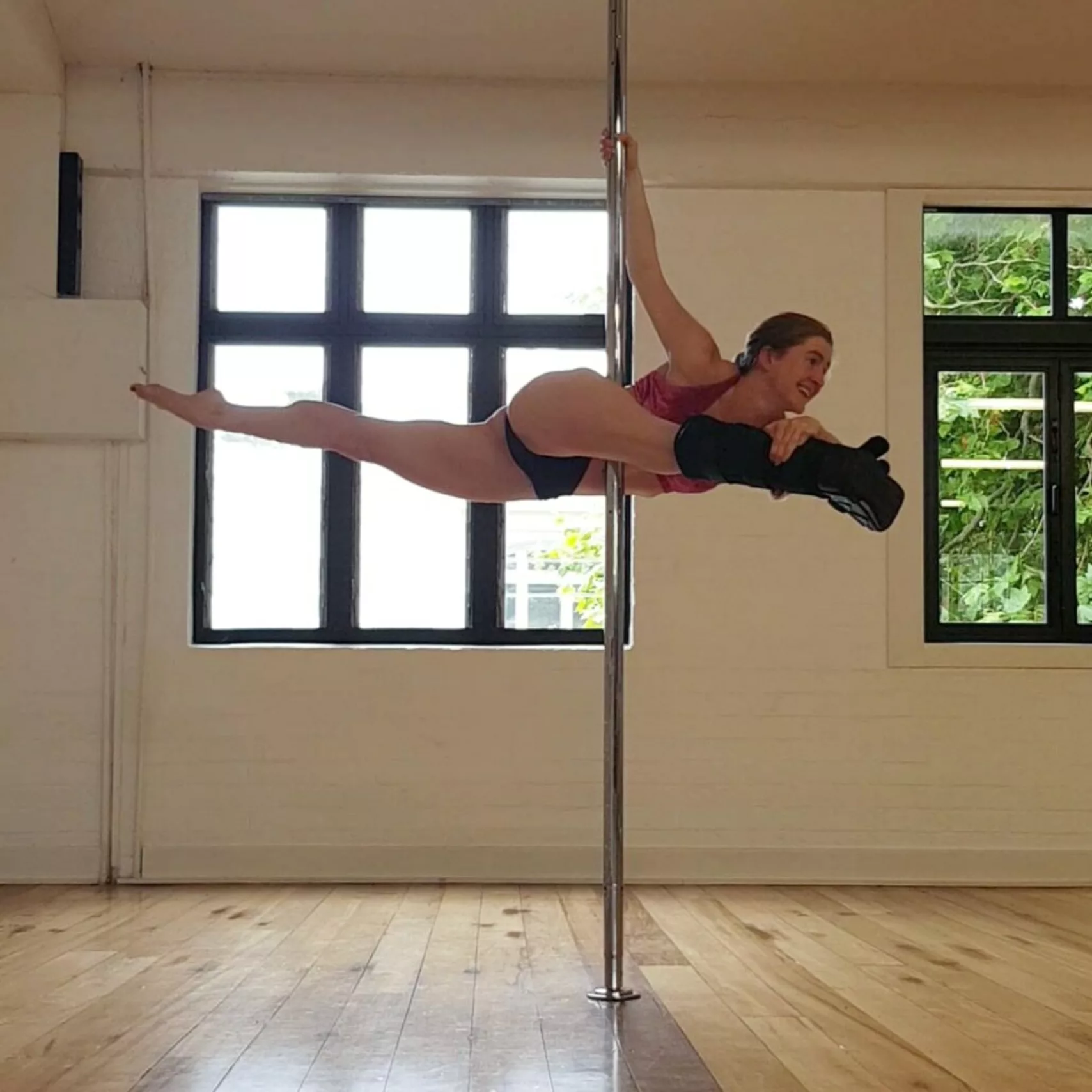
My first pole session in the studio was probably 10 minutes, cause that was about all I could do. It felt amazing, even though I was weighed down by the moon boot! Then I started working my way through the Level 1 and 2 curriculums to make sure I was feeling strong before returning to higher-level content. It was so great to be able to pole again, even doing the basics made me feel more normal!
With the help of ACC and some wonderful Physios, I was able to gradually rebuild the strength in my ankle over the course of a year (when it was deemed “as good as she’s gonna get”). Getting through that level of injury and back to 90% was a massive journey. I had to constantly push myself (with guidance from my physio) to the point of tears, and get through days where I couldn’t walk or my ankle would just give out underneath me while I was walking. But I was determined that I was going to get back to where I wanted to be!
It's been 3 years now, and although my ankle will never be the same as it was pre-break, it can toe point, it can land pole flips, and it can wear heels again (sometimes haha, that’s probably the most temperamental part). It still needs regular physio and massage "top-ups" to keep it functioning. But overall it's doing way more than was ever expected of it.
What are some common injuries you've noticed around the studio?
Hamstrings and shoulders are probably our most commonly seen major injuries. Because we're all keen to do all the flexible and strong things, sometimes we jump into things a little too early, or not quite warm enough. Unfortunately, healing from those seems to be a much longer journey than people realize, and most people still feel the “pull” of the injury a few years later.
Broken toes are another common one though. Those little toes don’t like being kicked into the pole or smashing into the ground if you exit a move too quickly.
If someone suspects they may have an injury, what would you suggest they do?
If you are in class and you suspect you’ve injured yourself please tell your teacher. We want to know so we can look after you and make sure we’re not making it worse, please don’t be embarrassed. Listen to your body too, and if you need to stop for the day, that’s ok.
Go see a Physio if you suspect you’ve done something more than just a bruise, either in person or over Zoom. You don't need to visit your GP first. The longer you leave an injury, the more your body will complicate it by compensating around the injury, so jump on it straight away.
I know it’s very tempting, but please don't ask your friends/family/teachers/Facebook to advise you on an injury. Everyone is so willing to help, but so often things are misdiagnosed or the wrong actions are given because the advice they gave relates to their own experience, rather than yours, and it’s better to get the right advice straight away from a professional.
Should we still pole dance when we have an injury?
Every injury is so different. Some you can still pole with, and some you can't, and I’ve seen people experience both. A good physio will look at your lifestyle and activities and advise you how to keep active around an injury IF it is safe to do so. Most physios I have worked with want to keep you active as much as they can, as fully resting and being inactive isn't actually the best solution for all injuries.
Whether your injury is from pole, or you just did something silly like walk off the sidewalk and jolt yourself, so often injuries can be worked around in pole class safely so you can keep coming along. If you’ve hurt something and can’t do it on one side but can on the other, we can definitely work with you on what you’re able to. Just grab your physio’s advice, and talk to your teacher or studio manager about what you’re going to need during that time.
If the professional advice is: you can’t pole, it’s worth checking if you’re allowed to do supplementary classes like Stretch during your recovery time so you can keep active in some way.
With my ankle, I could definitely return to pole, in a modified way! When I poled I kept it braced, listened to my body when it was angry at me for doing too much, and consistently kept up my strengthening exercises. So much of the “off-the-floor” pole was the best exercise for me too, as even though the Moonboot or the brace were a little in the way, the pressure was off my ankle so it was so freeing!
I talked to my physio a lot about my in-class positioning and the stresses on my joints, and she helped me to figure out what was safe to work on now, and what was in the “not-now but later” category. I initially needed to modify things in stretch class with extra blocks and supports, avoid anything high impact like jumping in warm-ups, and my “B-side” definitely suffered a bit as some grip points were wiped out with braces. Even with some limitations put in place, it felt so good to move! I also made sure to let my teachers know at the start of every class how it was going so they would know how best to help me, or know why I was avoiding some movements.
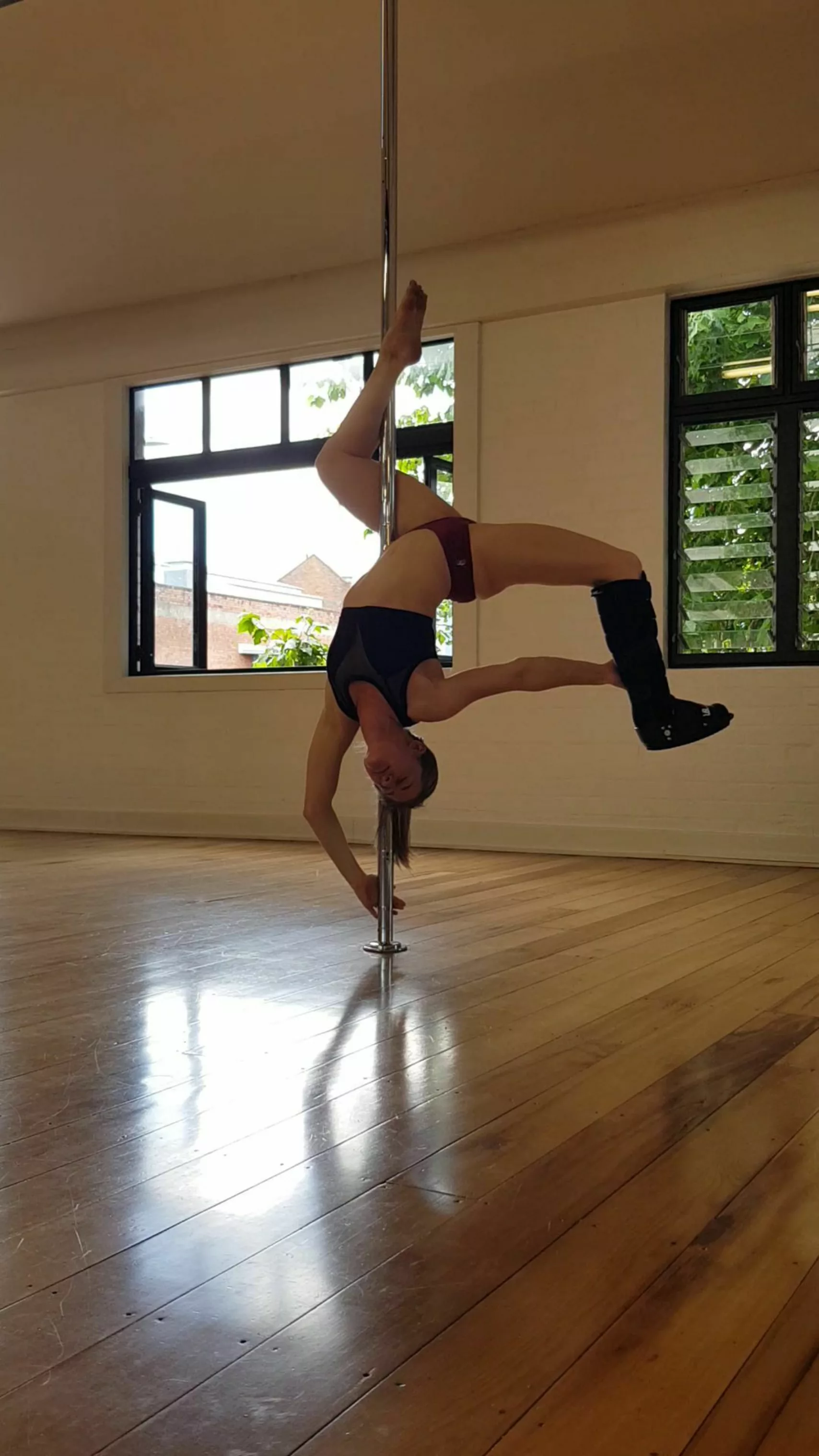
Any tips for avoiding injury?
Don't carry heavy things, like your partner, when wearing 7-inch heels!
But in all seriousness. Unfortunately, so many pole injuries we see can be avoided with a little patience. We don't usually see injuries from flips or crazy tricks, which is where you would expect them. Most injuries are from super basic things like moving too fast through a sequence, not warming up enough, trying moves you're not ready for, not waiting for a spot, being tired, or overtraining.
Good news…. those things are all mostly super avoidable! So if you can be warm, take your time, listen to your teacher, and be sensible about your training schedule, you’re giving yourself the best chance of avoiding an injury.
Do you have any other words of wisdom that you'd like to share with us?
“Easier” doesn't mean “safer” when it comes to pole! Doing things properly and safely is definitely harder, but one day you're going to be so grateful that you put the work in rather than looking for the "easy" way.
Quite often if it’s easier, we’re using more momentum and less strength to enter a trick. This just means you’re not only cheating future-you of some strength gains but also risking landing future-you with an injury that could take years to recover from.
You don’t want your pole journey to end from one single attempt at one movement you weren’t ready for… right? Cause that’s all it can take to wipe yourself out for ages.
Falls and injuries are not a “right of passage” to becoming a high-level poler or aerialist. Yes, some of us have had them, but it doesn’t mean any of us want you to follow in our injury footsteps! Every time your instructor hears a crash or a bang in class, their heart stops for just a little moment, try to train safe and not give them any more grey hairs.
Trust your teachers, trust the learning process, and try not to “jump” a few steps ahead of a progression to a bigger trick, or feel pressured into getting a new thing you saw on Instagram straight away. Those skills will still be waiting for you when you’re ready to do them!
All those things in life that you have to work hard for are the most rewarding. Work hard every day, and one day you’ll look back at how far you’ve come and be so impressed… and hopefully injury free!
